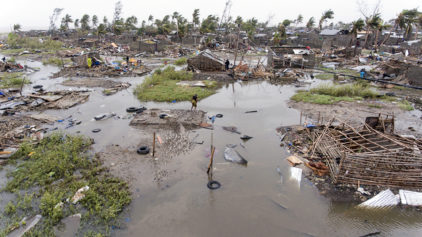Mozambique’s President Armando Guebuza on Saturday inaugurated a new international airport in the northern port city of Nacala, which is shortly to be Brazilian mining giant Vale’s main hub for coal exports.
The estimated cost of $200m has been partly financed by a loan from the Brazilian state-bank, BNDES. Brazilian company Odebrecht was in charge of the construction.
The new facility will allow business travellers to avoid the 200 kilometre journey from Nampula, the closest airport.
Built on a former military airbase, the airport has an initial capacity of 500,000 passengers a year and can accommodate long-distance aircraft including Boeing 747s, according to a statement from Aeroportos de Mocambique.
Mozambique Airlines (LAM) has been using the airport since December 8, but the new facility has not yet received international certification.
LAM is still blacklisted in Europe, despite recent progress acknowledged this week by the European Commission in an official statement.
The airport opening marks a new stage in the development of resource-rich Mozambique’s north, with Nacala already boasting one of East Africa’s deepest natural ports.
“From a maritime perspective, this is the only port between Durban and Djibouti to have a draft greater than 15 meters,” said Mathieu Freidberg, Africa director for shipping company CMA-CGM.
A five-year rehabilitation of port infrastructure launched in March aims to increase container traffic five-fold, according to Loni Shott of Portos do Norte, the port operator.
Vale Mozambique is also about to complete a coal terminal and a 912 kilometre railway linking the Moatize mines, in western Mozambique, to Nacala.
After being repeatedly postponed, operations are expected to start in the second quarter of 2015, Vale Mozambique CEO Pedro Gutemberg announced this week.
A $4.4bn investment, the Nacala logistic corridor — which encapsulates the port terminal and the railway line — is expected to handle 18-million tonnes of coal by 2017, increasing Vale’s current export capacity fivefold.
When the railway is completed, Nacala will be connected to neighbouring Malawi and to copper-rich Zambia, said Shott.
Nacala would then become an important gateway to the Indian Ocean,with China and India major trading partners.
“Carriers are seeking alternates to Durban, which is far and expensive,” said Mr Freidberg says.
“But beyond its obvious natural potential, Nacala still lies far behind Mombassa in terms of infrastructure.”


